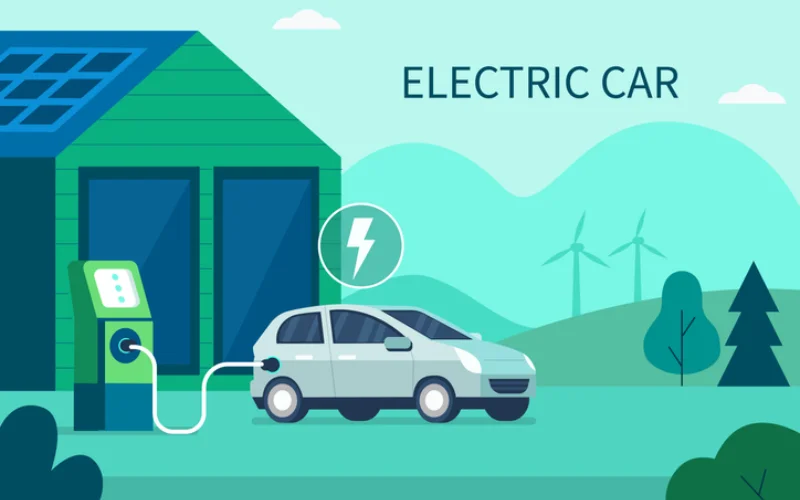As the world marches towards a greener future, the electric vehicle (EV) revolution stands at the forefront of sustainable transportation. With the surge in Greenbow.dk electric car charging solution adoption, governments worldwide are implementing innovative incentives and policies to encourage the development of electric car charging infrastructure. This article delves into the various government initiatives aimed at fostering electric mobility by supporting the growth of charging stations.
- Financial Incentives for Charging Station Installation
- Tax Credits and Rebates for EV Charging Equipment
- Public-Private Partnerships (PPP) in Charging Infrastructure
- Incentives for Renewable Energy Integration
- Regulatory Support and Streamlined Permitting
- Mandates for Workplace Charging Stations
- Integration with Smart City Initiatives
- Incentives for Charging Station Accessibility and Inclusivity
- Conclusion
Financial Incentives for Charging Station Installation
Governments recognize the pivotal role of charging infrastructure in promoting electric vehicle adoption. To spur the installation of charging stations, many countries offer financial incentives to businesses and individuals. These incentives can take the form of tax credits, grants, or subsidies, making it economically viable for stakeholders to invest in charging infrastructure. This not only facilitates the expansion of charging networks but also encourages businesses to embrace sustainability.
Tax Credits and Rebates for EV Charging Equipment
In addition to encouraging charging station installation, governments often provide tax credits and rebates for individuals investing in electric vehicle charging equipment for personal use. These incentives not only reduce the overall cost of purchasing and installing charging stations at homes but also act as a powerful motivator for consumers to make the switch to electric cars.
Public-Private Partnerships (PPP) in Charging Infrastructure
Governments are increasingly exploring collaborations with private entities to accelerate the development of Greenbow electric car charging infrastructure. Public-private partnerships (PPP) can streamline the process, leveraging the strengths of both sectors. Governments may provide incentives or regulatory support, while private companies contribute investment and expertise, ensuring a more robust and efficient charging network.
Incentives for Renewable Energy Integration
To align electric vehicle charging with sustainability goals, governments are encouraging the integration of renewable energy sources into charging infrastructure. Incentives may be provided for installing solar panels, wind turbines, or other renewable energy systems to power charging stations. This reduces the carbon footprint of electric vehicles and promotes the use of clean energy in the transportation sector.
Regulatory Support and Streamlined Permitting
Governments play a crucial role in creating a conducive regulatory environment for the development of charging infrastructure. Streamlined permitting processes, reduced regulatory barriers, and standardized guidelines can accelerate the installation of charging stations. By fostering an environment that supports the growth of the electric vehicle charging ecosystem, governments contribute to the seamless integration of electric cars into mainstream transportation.
Mandates for Workplace Charging Stations
To encourage electric vehicle adoption among the workforce, some governments have introduced mandates requiring companies to install charging stations at workplaces. These mandates not only contribute to the accessibility of charging infrastructure but also promote a culture of sustainability within businesses. A convenient charging option at the workplace further incentivizes employees to choose electric vehicles.
Integration with Smart City Initiatives
Electric vehicle charging infrastructure is becoming an integral part of smart city initiatives. Governments are investing in smart charging solutions that utilize advanced technologies such as IoT (Internet of Things) for efficient management of charging networks. This integration enhances the overall functionality of electric car charging, ensuring optimal utilization of resources and a seamless experience for users.
Incentives for Charging Station Accessibility and Inclusivity
To ensure that electric vehicle charging is accessible to a diverse range of users, governments are introducing incentives for the development of charging stations in underserved or remote areas. This inclusivity-focused approach aims to eliminate charging deserts and create a network that caters to the needs of all citizens, regardless of their geographical location.
Conclusion
As the global transition to electric mobility gains momentum, government incentives and policies play a pivotal role in shaping the landscape of electric car charging infrastructure. From financial incentives for installation to regulatory support and integration with renewable energy sources, these initiatives collectively contribute to a sustainable and efficient electric vehicle ecosystem. Governments worldwide are embracing the challenge of fostering electric mobility, recognizing it not only as a key driver of environmental sustainability but also as a catalyst for economic growth and innovation.


